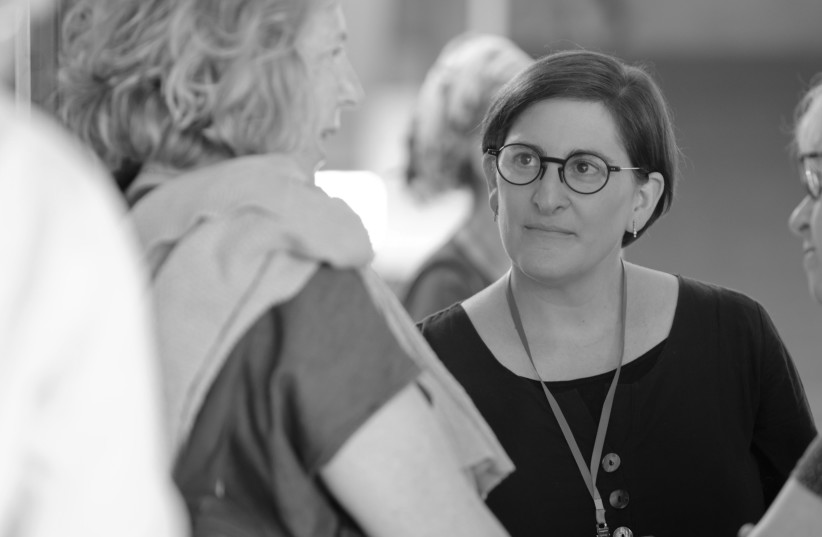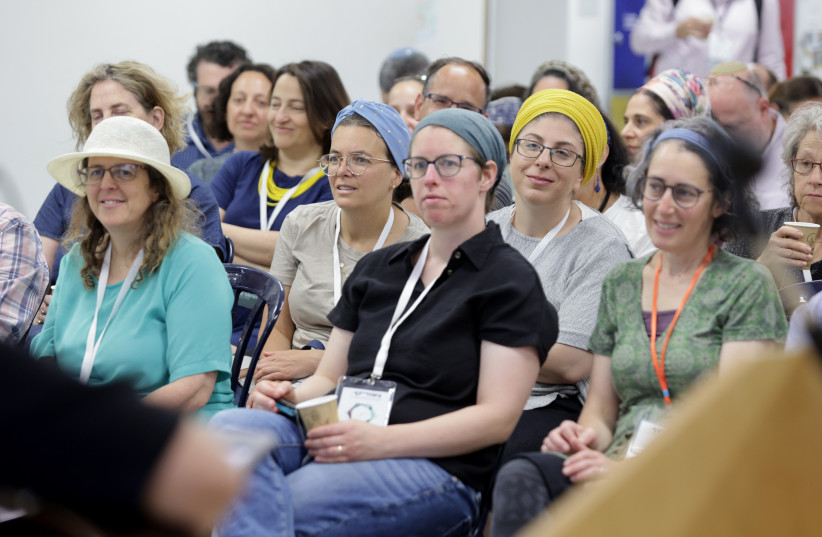There are at least 50 Orthodox minyaninim (groups of at least 10 individuals for a prayer service) in Israel that are egalitarian to a certain extent, according to the Hadar Institute in Israel that mapped out these communities and facilitates projects with them.
Established in 2018, the Hadar Institute set a goal to “be a home for vibrant communities committed to halacha [Jewish law] and gender equality, who are interested in a spiritual and community life connected to life and facing the challenges of the hour,” according to the organization’s website.
The Israeli branch is affiliated with Yeshivat Hadar, a traditional, egalitarian Torah study center on the Upper West Side of Manhattan. The yeshiva, established in 2006 by rabbis Shai Held, Elie Kaunfer and Ethan Tucker, is considered to be “open-orthodox” and is a liberal institution that broke many boundaries in the traditional Orthodox world.
“There are currently about 50 halachically-committed communities in Israel, which do not formally belong to any organizational framework and are on the continuum of gender equality,” Hadar president Dr. Rabbi Avital Hochstein told The Jerusalem Post. She explained that these communities are called B’shutaf (in-partnership) communities following an initiative that began in September 2016 and united many parties for discussion and mutual cross-fertilization that takes place mainly on social networks.
How did Hadar begin?

In the summer of 2019, the Hadar Institute, in collaboration with egalitarian orthodox communities such as Shira Chadasha, Hakhel, Nachat Ruach and others, initiated a conference that included a meeting of community leaders, working groups, discussions and panels.
The Hadar Institute, supported by the Honey Foundation for Israel and the Jewish Federation of New York, initiates various initiatives that form the infrastructure for joint activities of B’shutaf communities, including the annual conference for communities, rounds of update talks with community representative

“We realized there was a void in the sense of these minyanim both knowing about each other, supporting each other, learning from each other's experiences and understanding themselves as a broad phenomenon.”
Rabbi Avital Hochstein
“There are 50 of us all over the country,” Hochstein said. “We’re part of a big movement and growing phenomenon.” Asked if all of the minyanim are for anglophone community or in the Jerusalem area, she answered that this isn’t the case anymore. “Some of the minyanim have been around for many years such as Shira Hadasha in Jerusalem, but others are very small and barely make a minyan since they are at the beginning, so they meet once a month or every other week and are struggling.”
One of the founders of Shira Hadasha, Hochstein has done research and taught at many institutions. She was ordained in 2016 by Rabbi Daniel Landes, former director of the Pardes Institute of Jewish Studies. This was the first time an Orthodox rabbi ordained a group of Jewish scholars who are women in Israel.
“Like many minyanim, COVID-19 has left most quite worn out, especially the leadership.” she said, adding that all of these 50 communities socially belong to the religious-Zionist sphere in Israel, yet “they all have leadership that is voluntary – in other words, it’s not a rabbi getting a salary.”
Some of the struggles Hochstein spoke about have to do with spaces for prayer services and even using Torah scrolls for a more egalitarian prayer service which is still in the borders of Orthodoxy. “We realized there was a void in the sense of these minyanim both knowing about each other, supporting each other, learning from each other’s experiences and understanding themselves as a broad phenomenon.
“It’s not me sitting in Shoham with the local rabbi, who won’t lend me a Sefer Torah, which is why I would theoretically have to go to a different city to get one,” she said. “But there are 50 of us all over the country – and we’re part of a big movement and phenomenon.”
